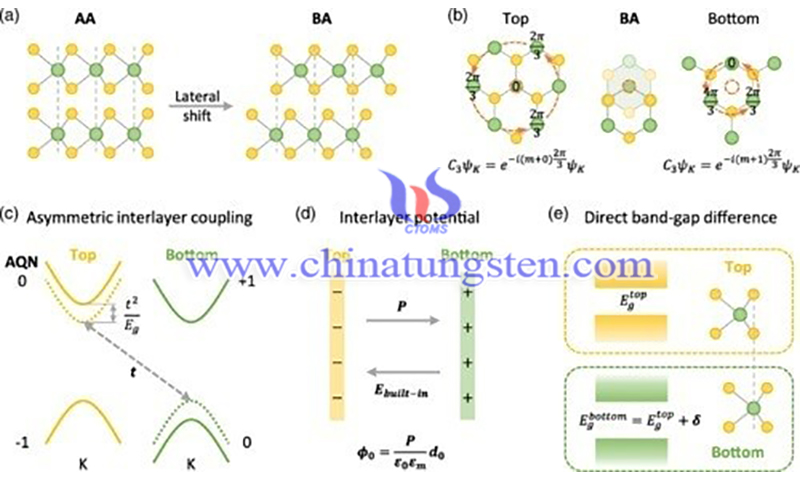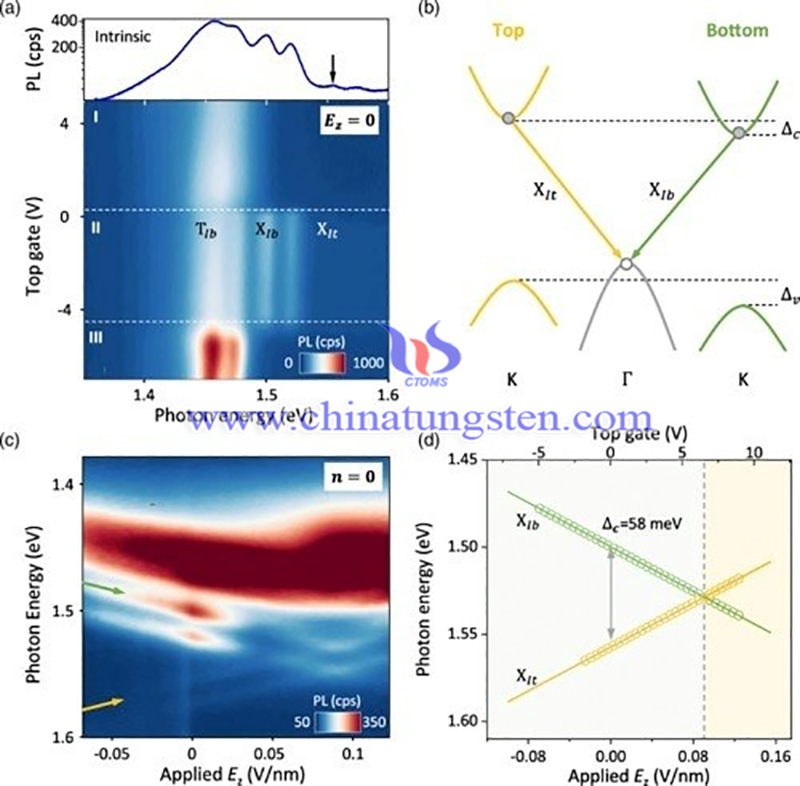Interlayer Coupling in Rhombohedral Stacked MoS2 Bilayer
- Details
- Category: Tungsten's News
- Published on Sunday, 08 January 2023 21:37
Researchers recently discovered a rhombohedral crystal structure of TMDs (with a stack of parallel oriented TMD layers) with tunable spontaneous polarization despite the absence of polarization in each layer. Researchers use an optical method was used to investigate the spontaneous polarization generated by asymmetric MoS2 bilayer interlayer coupling.
This new phenomenon transforms rhombohedral TMDs into ferroelectric semiconductors with the ability to absorb visible light, increasing their potential applicability in a variety of devices. However, the mechanism of this phenomenon remains unclear.

In the study, an optical method was used to investigate the spontaneous polarization generated by asymmetric interlayer coupling, which can modulate the properties of vdW materials due to the dramatic change in spontaneous polarization at different distortion angles of adjacent layers.
The research group focused on interlayer coupling, which was investigated by field-dependent optical spectroscopy in a two-gate device based on a homogeneous rhombohedral MoS2 bilayer. Here, the interlayer potential is compared with the energy difference at the conduction band edges of the different layers.
The results show that the coupling occurs only between the conduction band of one layer and the valence band of another layer, and not vice versa. This interaction is called asymmetric inter-layer coupling.
In contrast to graphene electrical sensing methods, the optical technique presented in this work does not rely on polarization switching via interlayer sliding, making it ideal for measuring spontaneous polarization in different materials. The band gap and band offset measured using optics quantify the strength of the asymmetric interlayer coupling at the K site, which is crucial for optoelectronic and ferroelectric applications in semiconductor TMDs with sliding ferroelectricity.

In summary, the unique sensitivity of Fermi polarization to the charge of multilevel doping is used to study the intrinsic interlayer potential and thus the spontaneous polarization in a homogeneous 3R-MoS2 bilayer.
The results provide a solid framework for understanding the moiré superlattice generated by distorted homogeneous structures. In addition to new physical phenomena discovered through position-dependent interlayer coupling, the interlayer jumps determine the moiré potential depth and the bandwidth of the moiré band.
The competition between interlayer jumps and Coulomb interactions leads to the different correlated insulating states observed in various experiments. Therefore, a thorough understanding of the inter-layer coupling in different stacking orders is essential for the study of these new semiconductor moiré materials.
By using various heterostructures of TMDs, asymmetric coupling with additional unique features can be realized in the future. Since polarization switching is not required, current methods for optical studies of spontaneous polarization can be used for a wide range of polar semiconductors.
Reference: Liang, J., Yang, D., Wu, J., Dadap, J. I., Watanabe, K., Taniguchi, T., Ye, Z. (2022). Optically Probing the Asymmetric Interlayer Coupling in Rhombohedral-Stacked MoS2 Bilayer. Physical Review X. https://journals.aps.org/prx/abstract/10.1103/PhysRevX.12.041005
| Molybdenum Supplier: Chinatungsten Online www.molybdenum.com.cn | Tel.: 86 592 5129696; Fax: 86 592 5129797;Email:sales@chinatungsten.com |
| Tungsten News & Prices, 3G Version: http://3g.chinatungsten.com | Molybdenum News & Molybdenum Price: http://news.molybdenum.com.cn |



 sales@chinatungsten.com
sales@chinatungsten.com